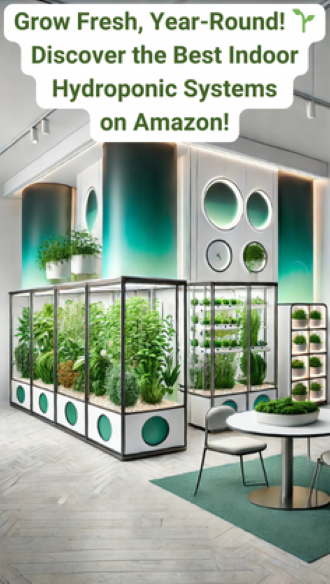
Essential hydroponic tools for beginners
Key Takeaways
- Essential tools include growing systems, lighting, and nutrient supplies.
- Choose tools based on your available space and budget.
- Understanding plant requirements is crucial for success.
- Quality equipment will enhance growth and reduce maintenance.
- Research and select the right products for your hydroponic setup.
Hydroponics is an innovative way to grow plants without soil, making it an excellent option for those with limited space or wanting to grow indoors. This article will guide you through the essential tools every beginner in hydroponics should consider for a successful start.
What is hydroponics?
Hydroponics is a method of growing plants using nutrient-rich water instead of soil. This technique allows for faster growth rates and more efficient resource use, making it popular among urban gardeners and hobbyists. Whether you are growing herbs, vegetables, or flowers, the right tools make all the difference.
Essential tools every beginner should consider
As a beginner in hydroponics, having the right tools will set you up for success. Here’s a detailed breakdown of the must-have tools:
| Tool | Description | Why It's Important |
|---|---|---|
| Hydroponic system | A setup that holds plants and manages nutrient delivery. | It maximizes growth conditions and production efficiency. |
| Lighting system | LED or fluorescent lights to provide necessary light for photosynthesis. | Ensures plants receive adequate light, especially indoors. |
| Nutrient solutions | Specialized liquid nutrients formulated for hydroponics. | Provides essential nutrients that plants need to thrive. |
| pH meter | A device to measure the acidity or alkalinity of the nutrient solution. | Helps maintain optimal pH levels for nutrient absorption. |
| Grow media | Soilless options (like rock wool or coco coir) that provide support. | Supports plant roots while allowing for water and nutrient circulation. |
| Environmental control equipment | Tools to monitor and adjust temperature and humidity levels. | Creates the right environment for healthy plant growth. |
Choosing the right hydroponic system
There are various hydroponic systems available, such as:
- AeroGarden systems - Compact and easy to use.
- Complete hydroponic systems - Good for beginners.
- Vertical systems - Space-saving options for small areas.
Consider your growing space and the types of plants you want to cultivate when choosing a system.
Best practices for beginners
Once you have your essential tools, it's vital to follow best practices to ensure a successful hydroponic garden. Here are tips to consider:
Beginner tips
- Start small with fewer plants to manage your learning process.
- Research common plants that do well in hydroponics.
- Regularly check for pests and diseases.
- Adjust nutrient concentrations based on plant growth stages.
- Maintain clean equipment to prevent disease.
Maintaining your hydroponic system
Regular maintenance is crucial for a thriving hydroponic garden. Follow these steps:
- Check and adjust pH levels weekly.
- Change nutrient solutions every two weeks.
- Clean all containers and tools after each cycle.
- Monitor plant health daily for signs of stress.
Conclusion
Getting started in hydroponics can be an exciting journey. With the right tools and best practices, you'll be well on your way to successfully growing plants indoors. For more extensive insights and resources, explore our buying guides to help you make informed decisions about your hydroponic equipment investments.
Pros
- Efficient use of space and resources.
- Fast growth rates for various plants.
- Ability to grow year-round.
Cons
- Initial costs can be high.
- Requires regular monitoring and maintenance.
- Learning curve for beginners.
